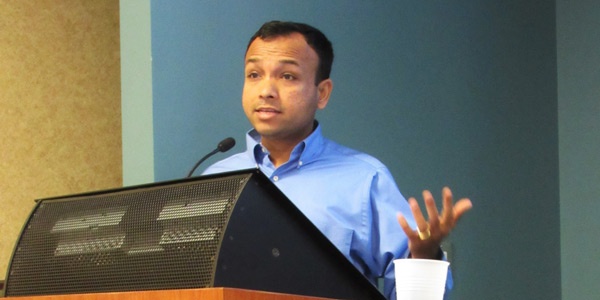By Amanda Durish Cook
CARMEL, Ind. — MISO began working with stakeholders to refine its behind-the-meter generation procedures last week with a special meeting at which it dropped hints on changes it might seek.
“We have a few ideas, but we want to hear from you,” System Support Resource Planning Manager Neil Shah said in opening the meeting.
“We do realize that [behind-the-meter generation] does span across several MISO processes,” MISO Director of Market Engineering Kim Sperry told stakeholders. “Our goal is to work with you on what the next steps should be.”
MISO staff said BTM generation could be incorporated into transmission planning, modeling and retirement notifications and questioned whether interconnection requirements need updating.
The RTO currently defines BTM generation as load-serving resources located behind a commercial pricing node.
Shah said some — but not all — BTM generation load data is captured when load-serving entities or transmission owners submit load information for planning models.
MISO’s Transmission Expansion Plan (MTEP) studies model generators with interconnection agreements, designated legacy network resources of MISO member utilities and all generators with long-term firm point-to-point service.
Eric Swanson, MISO modeling adviser, said all BTM generators greater than 5 MW and directly connected to MISO transmission are modeled. He said the effort to model all BTM generation could “exceed the benefit.” Swanson said if BTM generation is modeled, it would need to be registered as either a Type II demand response resource (DRR) or under a pricing node of a load zone or a DRR Type I.
Director of Planning Jeff Webb asked if BTM generation should be subjected to retirement studies. Webb said the RTO has about 6,000 MW of BTM generation and said it would be a problem only if it all retired simultaneously. “Perhaps we ought to treat it like a load addition,” he said of the retirement study process. “If generation can go off-grid and we don’t look at the impacts, is that okay?”
MISO also wants to know if changes are needed in how it registers BTM generation.
Currently, if BTM generation wishes to register as a load-modifying resource, it must submit to an annual generator test and registration and get assigned to a commercial pricing node. It must be able to respond in emergencies with a minimum 12-hour notice, be available five times during the summer and run for at least four hours. It also must submit its status daily to MISO.
Shah said if BTM generation wants to become a capacity resource, it needs an energy resource interconnection service (ERIS) or network resource interconnection service (NRIS) with firm transmission service. If the resource isn’t already connected to the MISO transmission system, it must enter the interconnection queue to obtain NRIS.
Indianapolis Power and Light’s Lin Franks said requiring BTM generation to enter the interconnection queue does not make sense when the generation will only serve nearby load. “If it’s going to serve load in your own territory, then there is absolutely no need for it to qualify for transmission service because it’s not going anywhere,” Franks said.
“Things might be unclear in the Tariff right now,” Shah told stakeholders. “In this meeting and meetings going forward, we’d like to clarify what’s required to make changes to the Business Practice Manuals if necessary. We want to work with you all to be if there needs to be any change.”
Justin Stewart of MISO’s stakeholder relations unit asked for stakeholder feedback on how definitions and requirements should evolve. He said responses would influence a yet-unannounced follow-up meeting.






